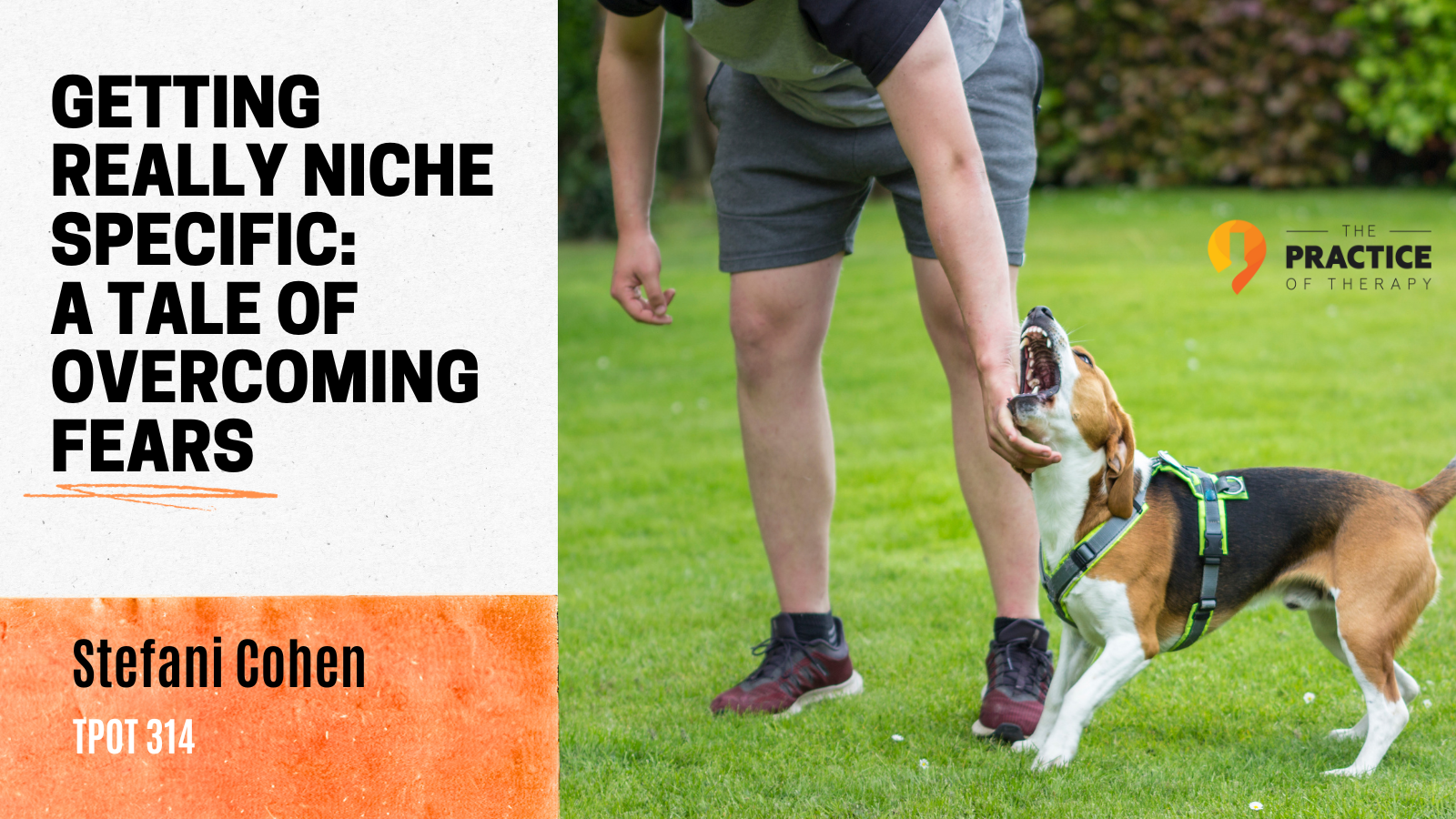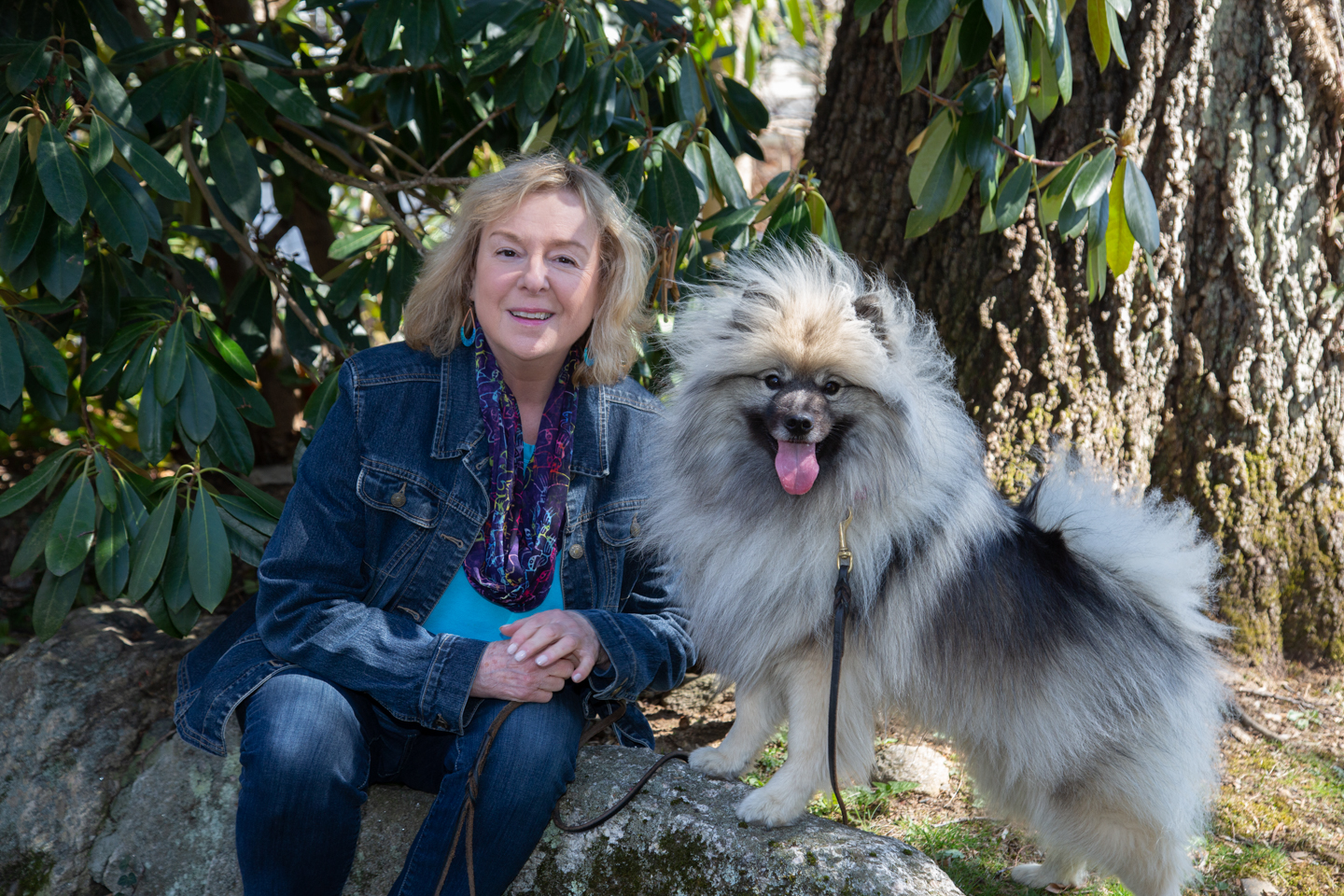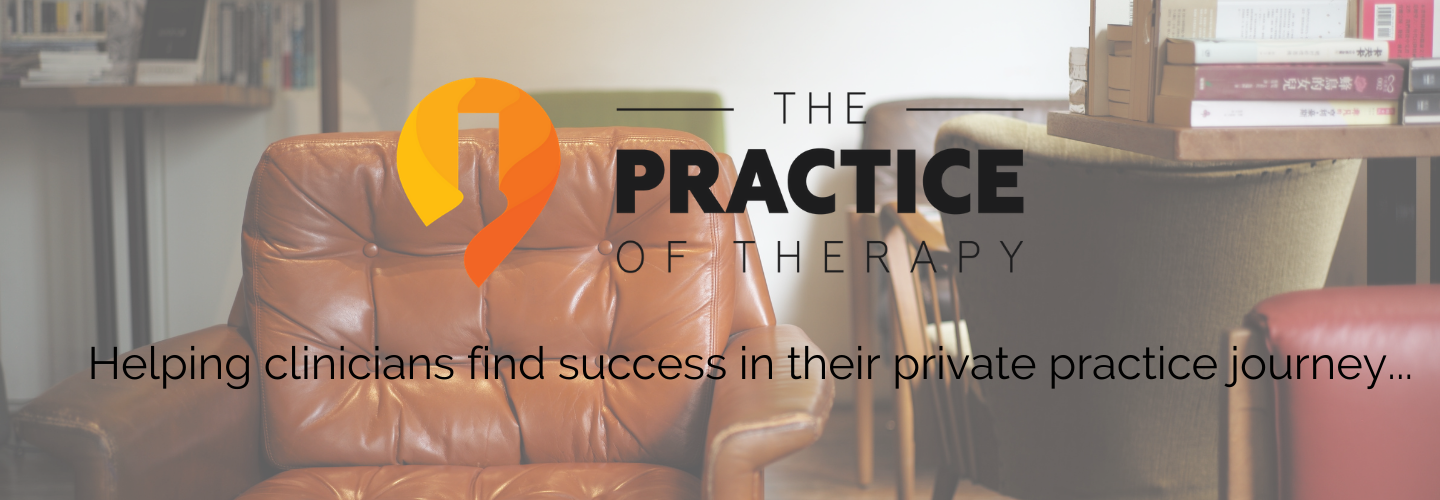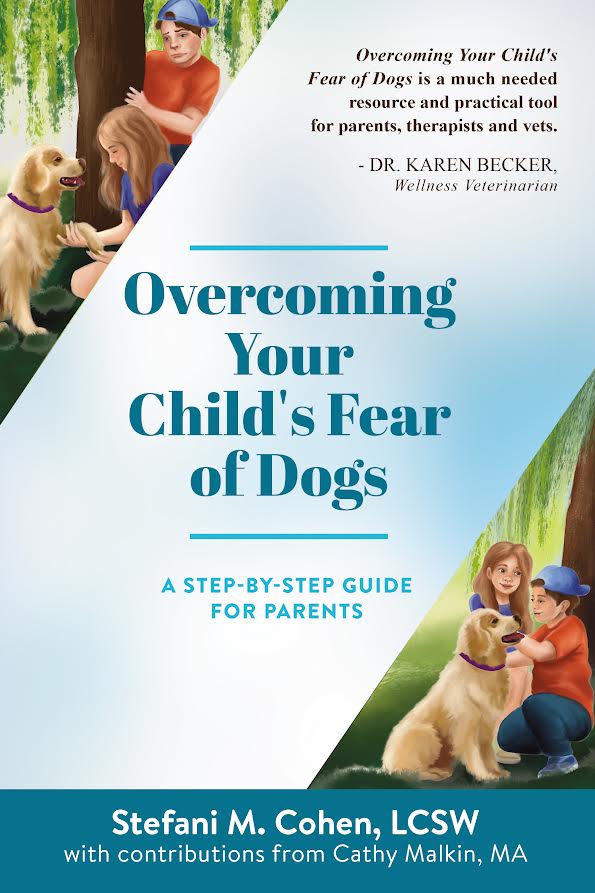
EmBARK on a transformative journey with Stefani Cohen as we chat about “Overcoming Your Child’s Fear of Dogs.” Stefani shares the heartfelt story of her daughter Becky’s unexpected fear of dogs, navigating a landscape void of resources. Through the prism of exposure therapy, Stefani witnessed Becky’s remarkable transformation, sparking a commitment to extend her expertise to a wider audience. Stefani authored a comprehensive guide aimed not just at parents but also therapists, dog trainers, grandparents, and dog enthusiasts.
We dive into the book’s core components, emphasizing education about dog behavior and the empowering journey of reclaiming control over fears. Join Stefani in uncovering the importance of educating children on safe dog interactions, cultivating curiosity, and practicing mindfulness. Discover her holistic approach to exposure therapy, encouraging individuals to become “detectives” in understanding canine behavior. From practical tips on meeting dogs for the first time to advocating for good manners in both dogs and children, Stefani’s insights resonate with anyone seeking harmonious relationships between children and our beloved canine companions.
Meet Stefani Cohen 
As a parenting expert, I have over thirty years of experience working with parents to help them develop and implement positive parenting strategies to maximize their children’s social and emotional development. I also work individually with children to help them learn to cope more effectively with “big” feelings, such as worry, fear, and anger. I have created and facilitated numerous parenting support groups and workshops. Topics have included anxiety in children, parenting special needs children, positive limit setting, and sibling rivalry. In addition, I have presented many teacher training sessions on recognizing developmental red flags and behavioral issues in children.
I have developed a niche of helping children who are afraid of dogs overcome their fears through exposure therapy using a live dog. Together with my canine assistants, we have done presentations for school children and scout troops on humane education, kindness to animals, and bite prevention. We have also visited professional associations, such as the Rotary Clubs, Assisted Living Facilities, etc.
My love of animals, especially dogs, developed when I was a young child. Dogs have always been an integral part of my life. When I realized that my daughter Becky was afraid of dogs, I began to develop and implement the Overcoming the Fear of Dogs Protocol (OFOD). Since then, I have perfected this method and have helped many children to feel safe and comfortable around dogs. This book is the culmination of my efforts. It was also born out of my wish and need for guidance when I needed help and support to help my daughter overcome her fear of dogs.
The Origin of “Overcoming Your Child’s Fear of Dogs”
Stefani shares the story of her daughter Becky’s fear of dogs and the lack of available resources at the time. Through exposure therapy with her sister’s well-trained dog, Casey, Stefani witnessed Becky’s transformation and decided to extend her expertise to help more people. Over the course of two years, Stefani authored a book to reach a broader audience.
Who Should Read “Overcoming Your Child’s Fear of Dogs”
Stefani Cohen reflects on the versatility of her book, acknowledging that if she were to rename it, she would steer away from a title exclusively for parents. She emphasizes its broader applicability, catering not only to parents but also to therapists, dog trainers, grandparents, and anyone with a love for dogs who knows someone struggling with a fear of them. As a therapist, Stefani recognizes the universal aspect of fear and the importance of education. The book serves as a valuable resource for understanding dogs, their communication, and fostering a safe interaction.
Educating Children on Dog Interactions
Stefani emphasizes the importance of educating children about interacting with dogs safely. She integrates pictures and explanations to help people understand how dogs communicate. The goal is to empower individuals to recognize when it’s safe to engage with a dog and when to give the dog space.
Empowering Individuals
Fear often stems from feeling out of control. Stefani’s approach involves building trust with the individual, assuring them they won’t be forced into uncomfortable situations. The process includes nudging, coaching, and cheering individuals to step out of their comfort zones gradually.
Exposure Therapy and Methodology
Stefani discusses her method, which extends beyond traditional exposure therapy. She addresses the need for individuals to become “detectives” in understanding a dog’s behavior. The goal is not to make every child interact with a dog but to teach them to coexist and behave appropriately around dogs.
Curiosity and Mindfulness
The conversation touches on the importance of cultivating curiosity in children about their fears. Stefani incorporates mindfulness techniques, deep breathing, and exposure therapy with well-trained therapy dogs to gradually acclimate individuals to dog interactions.
Meeting Dogs for the First Time
Stefani Cohen sheds light on a crucial aspect of overcoming the fear of dogs – the intricate dance of emotions between a child and a dog. In her insightful discussion, Stefani delves into the mindfulness and deep breathing techniques employed to manage this fear, emphasizing the importance of working with safe, dependable dogs during exposure therapy.
An often overlooked yet impactful suggestion is to meet dogs for the first time in a controlled environment. Stefani suggests asking the dog owner to come outside with the leashed dog, creating a less emotionally charged space and facilitating a smoother introduction. This thoughtful advice underlines the significance of understanding the emotional dynamics involved in a child’s first encounter with a dog and provides practical strategies for a positive experience.
Navigating Canine Greetings
Stefani Cohen addresses a common challenge in teaching children about dogs’ greetings and the importance of their sense of smell. Stefani emphasizes keeping hands by the side, allowing the dog to approach and sniff at their own pace during introductions. In exposure therapy with well-trained therapy dogs, Stefani guides children to get used to the dog’s presence gradually. She acknowledges that a dog approaching can be terrifying for someone afraid of dogs. Therapeutic techniques involve controlled interactions and positive reinforcement, like throwing treats near the child’s foot. Stefani underscores the interconnectedness of human and canine energies, emphasizing that remaining calm can positively impact the dog’s behavior.
Working with Parents
Aside from her passion for helping individuals overcome the fear of dogs, Stefani discusses her work with parents on positive parenting and behavioral issues. Small changes in parenting approaches can significantly impact a child’s behavior.
Gordon: Hello everyone. And welcome again to the podcast. And I'm so glad for you to get to know today, Stephanie Cohen. Welcome, Stephanie. Stephanie is a social worker up in New York and the West in Westchester County. And she had reached out to me about her, her book overcoming a child's fear of dogs, but as a start with everyone, Stephanie, why don't you tell folks a little bit more about yourself and how you've landed where you've landed?
Sure,
Stefani: so I am a licensed clinical social worker up here in New York and been a lifelong animal lover and had lots of animals over the years. And when my daughter Becky was born. Uh, long time ago, but she was about five and out of the blue, she announced that she was afraid of dogs and wasn't going to grandma's anymore and wouldn't go on playdates and honestly, I was blindsided.
I nothing had happened to her that I knew about. And I didn't understand her fear, and I, truthfully, I was frustrated by it. And at the time, there really were no resources available. And everybody just kind of thought she was being silly. And, but I knew she wasn't. She truly was panicked. And my sister, Kathy Malkin, who contributed to the book, had a wonderful dog.
Well trained named Casey and we kind of synchronistically did a little bit of exposure therapy with Becky and Casey and we had Casey leashed and Becky would ask Casey to sit and it was a very controlled safe environment and little by little Becky saw she was safe with Casey and eventually it generalized to other dogs.
And okay, so that was that. We felt really good about it. And then as a therapist and dog lover, I kind of started to incorporate my dogs into some sessions. And if someone was afraid of a dog, I kind of did a little exposure therapy. And then little by little, I started to think, you know what, I have something here.
And so I, what I realized was I can only help one person at a time. And I really want to help as many people as possible. So over about two years and during the pandemic. I was able to get this book published.
Gordon: That's awesome. Yeah. And Stephanie was gracious enough to send me a copy of the book and I was going through it earlier this week and it's it is packed full of, of worksheets and exercises and That sort of thing that I think most therapists would find really helpful if particularly working with children, you know, just around probably this would translate for the fear of any animals or of that sort that are pets and that kind of thing.
So a hundred percent. Yeah. So You want to maybe talk about a little bit of your method in the book and just, I know most of us are, are very familiar with exposure therapy and kind of what that encompasses, but I'm sure that there's much more to it than that.
Stefani: Right. And just like a little side note, if I was going to go back and give my book a new title, I probably wouldn't put that this was specifically for parents.
Because it actually is useful for therapists, dog trainers, grandmas, anybody who Loves dogs and knows someone who is afraid So there I think there are two important things that as therapists. We all know we're afraid of things. We don't understand So I have a huge educational component Helping people understand dogs how they communicate And I think a lot of parents these days, we teach kids so many things to stop, drop and roll in a fire, how to cross a street, how to stay safe on the internet.
We don't always remember to teach them how to be safe with dogs. So, there's an educational components. I do pictures of dogs and I try to help people see what the dog is communicating with their body. Things like that. And that, that gives a better understanding. So, you know, you can know when it's safe to interact with the dog and when you should really give the dog some space and stay away.
Um, the other piece of this is that being afraid is feeling out of control. So we try to help the person feel more in control. And that starts with, um, um, a basic level of trust. That I ensure the person that they will not be forced to do anything they don't want to do. I will nudge and coach and cheerlead to try to get them out of their comfort zone.
But they absolutely will not be forced, um, into doing something they don't feel ready for. Mm hmm. Just like a little anecdote from my practice. Taylor was age seven. Was afraid of dogs and our 1st session, she stood next to her car. And myself and the therapy dog team was 15 feet away on a blanket, and we spent the whole 45 minutes with Taylor observing the dog.
That's as much as she could do, and that was okay. So, you know, we scaffold, we go slowly, the whole thing. And every kid is different.
Gordon: Yeah, that's, that, yeah, it's, you know, as you were describing that, I think for those of us that were maybe raised around dogs or had dogs or it really any pet. And as a matter of fact, I just noticed one of our cat, my cat just popped in here, so she might decide to join us here.
But, you know, I, I think we take it for granted that just people kind of know instinctually how to be around animals and pets. Um, you know, I think about, you know, one thing that comes to mind for me is that I've never really been around horses much, but I know when I've been around horses, they can seem, maybe it's not a great comparison, but they can seem a bit intimidating to me.
And so, you know, but I, you know, I know enough about animals and that sort of thing and get curious and all that kind of thing, but do you find that helping, helping children in particular, get curious about their fear? Is that something that's
Stefani: helpful? Yes, that's a very, that's a really good point. Yes. So I kind of say we're going to be detectives.
And when you look at the dog, Nico, for example, who's a great little Bernadoodle, how do you think Nico is feeling? And When children are really scared, they just really want the dog to stay perfectly still, which I tell them is impossible, because the dog is alive. And when you're alive, you move. So, if Niko maybe turns his head to look back to see who's petting him, exactly to your point, was it, why do you think Niko is doing that?
And sometimes they know, and it's So we help them under we help them understand a couple of things that I think are very important that I want to mention. My goal here is not to have every child interact with a dog. I mean, I would love that if it can be done safely and they're comfortable, but dogs are everywhere and it's impossible to live a full life by avoiding dogs.
So. Learning to coexist and know how to kind of behave with them is very important. I'm sure you'll understand there that, you know, that whole fight or flight thing kicks in. So if you're afraid of a dog, you may want to run. And that's the first thing I tell people. If you run, dogs are hardwired to chase you.
So we act, so we practice standing still. crossing arms and turning sideways because in dog language that's telling the dog I'm not interested. Keep moving. Yes. So that helps to give a plan and to help them feel a little bit in control. They know what to do.
Gordon: Right. Right. Yeah. You know, it's, uh, it's interesting and another thought that comes to me for people or children that have never been around dogs or, or pets for that matter of just knowing how to read a pet of whether or not, you know, their hat, the pet is glad to see you are not glad to see you, whether the pets feeling playful or just curious, or all of those, all of those kinds of things.
Right. It is a bit like maybe somebody that might be on the autism spectrum, them learning how to read people. Um, Yeah. Yeah. Yeah. And so I know with, with people that I have friends and people that I've worked with over the years that on the autism spectrum, They've had to learn to be much more observant of what's going on with other people, because they don't just intuitively pick it up.
And I'm wondering, you know, if there are some children that maybe just have not learned how to intuitively pick up. On, you know, a dog, dog's languages. I think there's something hardwired in us as human, those humans and dogs that helps us communicate at a level that, you know, we don't quite understand.
Stefani: Yes, I think so. And I think as therapists, we pro that that part of us may be finally developed, but I, so I have four grandchildren now and I'm very conscious of helping them see. What my dog Winnie is telling them the two year old is the most interested and Winnie very often will say by walking away.
I'm not, I've had enough, I'm not interested and I need to help, I need to help Remy understand what Winnie's saying. And I think we, you know, there's a big level of respect also the same way we have to be helped to respect people. We need to respect when animals are telling us. And that's really important with dogs because if you don't respect them, you might get
Gordon: bit.
Yeah. Yeah. What, what is your way of teaching kids about, I know one of the things with any animal, you know, both dogs and cats is, is that when they're greeting somebody for the first time, they, they have to use their sense of smell. That's how they, how they, how they, how they check things out. And so how, how is it that you teach that to children so that they're not afraid?
Well,
Stefani: It's kind of difficult because it used to, the thinking, and I'm not a dog trainer, I want to be clear about that. But the thinking used to be that you would extend your hand and kind of put it near the dog's muzzle and the dog would smell you. The thinking now is you keep your hands by your side, the dog approaches you if they want to interact, they sniff, and then they decide if they want to interact or not.
If you are afraid of dogs. A dog approaching you is going to be terrifying. So, in the exposure therapy, with therapy dogs who are well trained and always, always, always on leash, we practice the child getting used to the dog. And I actually, once they reach this level, I sometimes will throw treats. At the child's foot and the dog will come up and whatever, but that that can feel very scary.
Otherwise, you know, dogs and all animals pick up on our energy. So if we can remain calm, lots of times that helps the dog remain calm.
Gordon: Right, yeah. Go ahead. Yeah, well, I was going to say, I would think that a dog would sense immediately if someone's afraid of him. And so they would, that would probably, I'm guessing, put the dog on guard as well.
And so then you've got that whole interaction to
Stefani: deal with. Yeah, that's tricky because I, if you tell a six year old. If the dog knows you're afraid, that's gonna raise the kid's fear in a way. So, we practice mindfulness, we do deep breathing, and again, we work with very safe, dependable dogs. And, I think one, one thing that I also want to make sure I mention, and a lot of people don't think about it, even though to me, now that I think about it, it seems like a no brainer.
When you're going to meet a dog for the 1st time, if you're going on a play date or something, I think it's perfectly okay to ask the owner to come outside with the dog on leash. So, you, the dog can see you and you can see the dog. In a like less emotionally charged environment. Cause most dogs are very excited when someone comes to their home.
I do this with my dog. We go out and we say hello. And then we come back in and for kids who are afraid. I always try to remind their parents it's okay to ask for that and it can make a big difference.
Gordon: Yeah, because a lot of, a lot of dogs are jumpers and they, that, that could be just terrifying for a child, especially I would think.
Yeah,
Stefani: I don't like to be jumped on. I'm not afraid, but I don't enjoy it. Right, right. I also tell kids that we help them have good manners. Please and thank you and excuse me, but it's really important that dogs have manners too. And that means not jumping, or if they are going to jump, then somebody needs to leash them and prevent the jumping.
Right. A lot of people
Gordon: don't do that. Right. Right. Yeah. That's, that's one thing that I know I have, have had friends where we go, I go to their house and immediately the dog is just really glad to see you. And it just, you know, and I'm, I grew up around dogs, so I'm not. Afraid of dogs and know what's happening and whatever.
But after a while, it just gets kind of annoying. Yeah, yeah, it does. It does. So, well, to change gears a little bit, Stephanie, I know that you've done a lot of work, just looking at your, your bio, you've done a lot of work with parents. Are there other areas that you work in as far as with helping parents and parenting?
Yeah.
Stefani: So a lot of positive parenting. Parents contact me. if there are, you know, some behavioral issues or some tension in the home. And so we, we do a, I do a lot of that kind of behavioral positive parenting stuff with parents. The anxiety piece, anxious parents and anxious children is, I think actually the fear of dogs was an offshoot of that.
Yes. So, but my My real passion is helping people who are afraid of dogs. The other work is like my bread and butter, but this is my passion.
Gordon: Well, yeah, yeah. That makes sense. I, I know early in my career, I worked for an organization. Uh, it was a nonprofit that worked with at risk children and youth. And I always felt, and I know.
Um, and work with children is, is important, but I've always felt that you could get. Make a bigger impact. If you could work with the parents. Around that. Rather, rather than just working specifically with the kid on their behaviors. If nothing changes in the home, then everything that you do in a session with a kid is not going to really.
Have any sticking power. Yeah,
Stefani: I, I agree with that a thousand percent. It's true, and sometimes small changes that parents make, even just the wording. Of, you know, if, if you don't put your shoes on, you can't watch TV. To children who are ready for school can watch TV Sometimes just very subtle things like that can make a tremendous difference as you know,
Gordon: right?
Right tell folks how they can get in touch with you and find your book and all of that.
Stefani: Sure. Sure So the book is on Amazon and Barnes and Noble and you can find I'm perfectly happy to have a direct email Which is, you have to spell my name right though. Stephanie is S T E F A N I C O H E N. L C S W at gmail.
com. I offer a 15 minute free phone call to kind of help you start your journey facing the fear of dogs. People contact me really from all over the world and I can't be there to help, but I can consult and guide. And then my website is overcomefearofdogs. com.
Gordon: All right. All right. And we'll have links in the show notes and the show summary for people to find that easily.
So, well, Stephanie, I enjoyed getting to know you and hopefully we can talk again before long.
Being transparent… Some of the resources below use affiliate links which simply means we receive a commission if you purchase using the links, at no extra cost to you. Thanks for using the links!
Stefani Cohen’s Resources
Stefani’s Website
Stefani on Facebook
Stefani on Instagram
Stefani on LinkedIn
Overcoming Your Child’s Fear of Dogs: A Step-by-Step Guide for Parents
Resources
 Use the promo code “GORDON” to get 2 months of Therapy Notes free.
Use the promo code “GORDON” to get 2 months of Therapy Notes free.
Instagram Mental Health Templates
Mental Health Wear (USE CODE “POT24”)
YouTube Series: Love & Loss
The Practice of Therapy Community
Listen to other great Podcasts on the PsychCraft Network Today!
Google Workspace (formerly G-Suite) for Therapists Users Group on Facebook
The Course: Google Workspace for Therapists
Follow @PracticeofTherapy on Instagram
Meet Gordon Brewer, MEd, LMFT
 Gordon is the person behind The Practice of Therapy Podcast & Blog. He is also President and Founder of Kingsport Counseling Associates, PLLC. He is a therapist, consultant, business mentor, trainer, and writer. PLEASE Subscribe to The Practice of Therapy Podcast wherever you listen to it. Follow us on Instagram @practiceoftherapy, and “Like” us on Facebook.
Gordon is the person behind The Practice of Therapy Podcast & Blog. He is also President and Founder of Kingsport Counseling Associates, PLLC. He is a therapist, consultant, business mentor, trainer, and writer. PLEASE Subscribe to The Practice of Therapy Podcast wherever you listen to it. Follow us on Instagram @practiceoftherapy, and “Like” us on Facebook.

